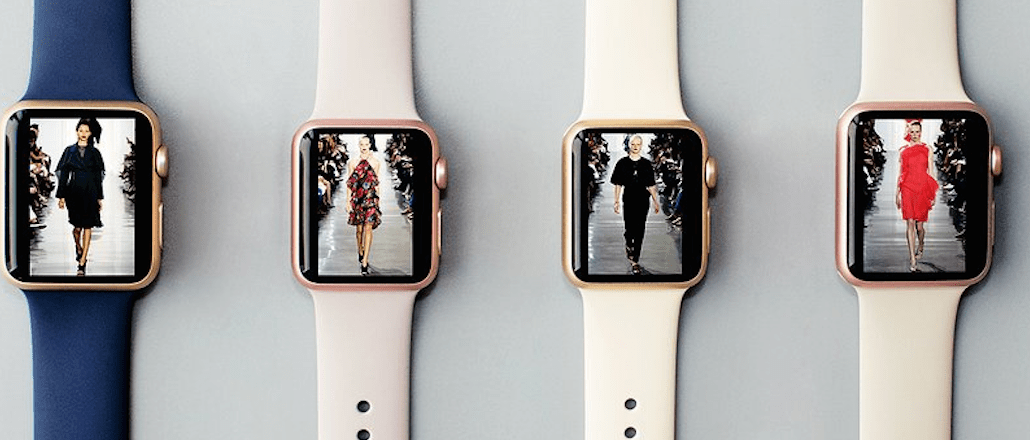How one app is trying to turn the Apple Watch into a fashion week status symbol

At Tommy Hilfiger’s New York Fashion Week show on Feb. 8, a “fast lane” for check-in appeared next to the standard line to get into the show. Attendees wearing an Apple Watch equipped with a new GPS Radar app could breeze past the rest.
With its Apple Watch app, GPS Radar, which claims to be used by 90 percent of fashion shows, is hoping to bring the VIP entrance a tech refresh. In addition to cutting the entry line, Apple Watch wearers also got photos from Tommy Hilfiger’s runway show and behind the scenes sent to their apps as soon as they were uploaded. On Tuesday, French fashion house Balmain announced it would create the same experience at its Paris Fashion Week show on March 3.
An Apple Watch app for easier on-the-go event check in and reminders is not novel, but GPS Radar has managed to elevate the experience by turning the watch, and the apps available on it, into a covetable item by pairing it with features not available to the average smartphone user.
“Our community is very exclusive,” said Launchmetrics president Eddie Mullon, who said that his company works with buyers, editors and influencers who get invited to around 200 fashion shows per week. “The watch identifies you and gives you that streamlined entry, and it becomes your invitation.” Mullon added that having built relationships and worked on fashion month for 10 years, Launchmetrics was in a unique position to incorporate smartwatch technology into fashion shows.

On the aesthetics front, Apple has been adding new watches to its collection that appeal to the fashion-forward sort. In September, it added gold and rose gold cases and neutral, muted colors to its Sports edition, the cheapest version of the watch recognizable by its gummy band, to reach lower-spending but still trendy consumers. On the pricier end, Apple has partnered with Hèrmes for a collection of leather watch bands.
“Apple has worked really hard to get the watch to a coveted status amongst the fashion set,” said Jessica Navas, evp at branding agency Erwin Penland. “Traditional luxury is one dimensional — you’d see a certain bag or watch, and that alone was meant to convey a privilege and status. Now you have a watch that’s not only conveying status, but giving you that, because it’s letting you skip a line.”
Still, Apple’s play here is more about exposure than exclusivity.
“This move is about wanting fashion influencers to be seen, and photographed using Apple Watch, and using it,” said Lucie Greene, the worldwide director of the Innovation Group at J. Walter Thompson. “Street style, and front row style, has become such a part of the coverage and exposure fashion media gets. If Apple becomes part of that dialogue then it’s one step further to appearing in mainstream fashion press and blogs.”
As for fashion brands, the digitally forward runway show has become the norm, as live streams, Instagrams, Snapchats and more interactive experiences take over each collection. While the Apple Watch may seem like another piece of technology to distract show goers, Mullon said it’s the opposite.
“We’re about identifying the right people to the brand, and making sure those people get into the show,” he said. “The Apple Watch app is almost like a personal assistant that’s guiding you through fashion month, so you can focus more on the collections. You don’t even have to take out your phone.”
More in Marketing

Zero-click search is changing how small brands show up online — and spend
To appease the AI powers that be, brands are prioritizing things like blogs, brand content and landing pages.

More creators, less money: Creator economy expansion leaves mid-tier creators behind
As brands get pickier and budgets tighten, mid-tier creators are finding fewer deals in the booming influencer economy.

‘Still not a top tier ad platform’: Advertisers on Linda Yaccarino’s departure as CEO of X
Linda Yaccarino — the CEO who was never really in charge.








